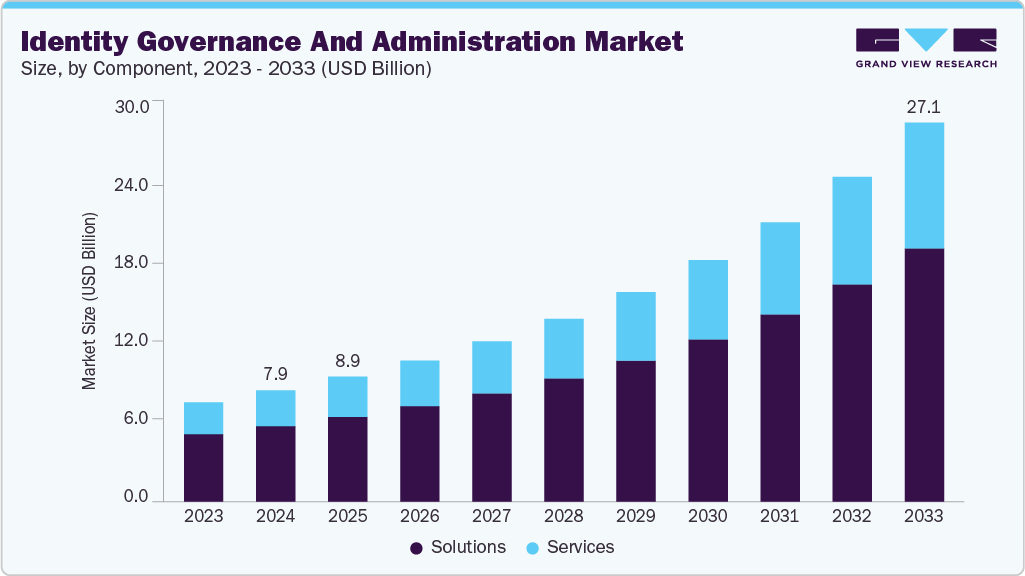Companies with 1000+ employees are using 150+ SaaS applications on average, according to research. Organizations juggle with hundreds of systems and to keep it secure and compliant is a bigger challenge. That’s exactly where an Identity Governance and Administration (IGA) platform comes in.
Before we dive into what to look for in an IGA solution, let’s quickly revisit what it does and why it’s becoming non-negotiable for modern enterprises.
Identity Governance and Administration (IGA) is all about managing who has access to what and why. It gives organizations the visibility and control they need over user identities and access rights across all systems and applications.
Modern IGA platforms like Hire2Retire go beyond basic access management. They automate provisioning, enforce access policies, and handle periodic access reviews throughout the entire user lifecycle from onboarding to offboarding. That means fewer manual processes, fewer mistakes, and fewer risks of privilege misuse.
There are two types of IGA tool: Identity lifecycle management and Access governance.

This covers the entire “joiner-mover-leaver” journey:
When done right, this ensures that people always have access to what they need and nothing they shouldn’t.
This layer focuses on oversight – verifying that access remains appropriate over time.
Key components include:
In short, access governance keeps your identity ecosystem clean, compliant, and under control.
Manual IGA processes simply can’t keep up anymore. Today’s enterprises are using an average of 371 SaaS apps, up by more than 30% in just a year. Managing access across all of them manually? That calls for errors, audit headaches, and security gaps.
According to The State of Identity Governance 2025 report, over 60% of IT leaders say time-consuming manual tasks are the top reason they’re investing in IGA automation. More apps = More identities = More risk.
The IGA global market is estimated to reach $27.11 billion by 2033, growing at a Compound Annual Growth Rate (CAGR) of 14.9%.
Below image shows the research by Grandview Reasearch about the trends of IGA tool adoption in coming years.

Selecting an IGA platform isn’t just a technical decision, it’s a strategic one. You’re not just buying software; you’re investing in a foundation for secure growth and governance. So, you need to define your IGA strategy well.
Here’s how to approach it:
Are you trying to simplify audits, improve efficiency, enforce least privilege, or automate lifecycle management? Know your “why” before diving into vendor comparisons.
Involve HR, IT, security, and compliance teams early. IGA touches multiple parts of the organization, so alignment is key.
Automating broken workflows won’t help. Map out your existing access processes and clean them up first.
Don’t aim to fix every identity issue on day one. Start with critical areas like provisioning and access reviews, then scale gradually.
Look for platforms with strong, pre-built connectors for your SaaS, on-prem, and custom systems. This will save you months of implementation time.
Garbage in, garbage out. Make sure your HR system or other authoritative data sources are accurate before feeding them into the IGA.
Cloud-native solutions are easier to maintain and scale, but if your organization has strict data residency requirements, a hybrid or on-prem model may be better. Hire2Retire serves different methods of deployment.
Don’t just look at the license cost factor in integration, customization, and ongoing maintenance.
Check the vendor’s implementation track record and customer references.
Check if the vendor gives you clear picture of the ROI you would draw by using their tool like the one Hire2Retire offers.
You’ll be in this partnership for years, so choose a vendor with proven credibility.
Hire2Retire fills the identity lifecycle gap in IGA by bridging HR systems and identity systems.
Below table gives a summary of some core ways in which Hire2Retire can help.
| IGA Challenge / Gap | Hire2Retire Feature / Capability | Benefit / Impact |
|---|---|---|
| Onboarding (“Joiner”) | When HR creates a new employee record, Hire2Retire automates creation of directory & application accounts with appropriate entitlements / access rights. | Faster, consistent provisioning; reduces delays and human error in account creation. |
| Role changes (“Mover”) | Updates in HR (title, department, etc.) automatically trigger adjustment of entitlements, group memberships, access permissions, etc., in line with policy. | Ensures least-privilege access and alignment with actual role; avoids privilege creep. |
| Offboarding (“Leaver”) | On termination or exit events, associated identities (in AD / Azure AD / apps) are deactivated or disabled automatically. | Reduces windows of risk from orphaned accounts or access left open. |
| Integration with HR systems | Supports integration with more than 14 popular HR / HCM systems (for example: Workday, SAP SuccessFactors, etc.) to receive lifecycle events. | Enables seamless flow of employee data changes into identity systems without custom work. |
| Integration with directories / identity providers | Works with Active Directory, Azure AD / Entra ID (cloud, hybrid), and other identity providers. | Ensures that identity changes (provisioning, deprovisioning, group assignments) are reflected across the identity infrastructure. |
| Policy-driven / role-based access control (RBAC) | Enforces “birthrights” or role-based access assignments automatically (based on policies). | Governance: people receive only the rights needed for their role; policies are enforced automatically. |
| Audit, reporting & compliance | Because the identity operations are automated and centrally controlled, consistent logging, audit trails, and reporting become easier. | Helps in compliance frameworks (e.g. for regulatory audits) by giving a clear, consistent record of identity changes. |
| Lightweight / “no-code” / low overhead | Hire2Retire is positioned as a user-friendly, no-code, UX-led platform. It does not require heavy custom development. | Less technical debt, faster deployment, lower total cost of ownership compared to full IGA suites. |
As CIOs and GRC leaders look ahead to 2026, one thing is clear: identity governance is no longer a back-office IT concern, it’s a core business enabler.
The right IGA platform doesn’t just help you stay compliant; it streamlines how people get access, how risk is managed, and how the organization scales securely.
In a world where every digital identity can be an entry point or a risk, strong governance isn’t optional, it’s essential.
Need guidance tailored to your IT and security ecosystem?

Tanvi Mehata is a Marketing Specialist at RoboMQ with a strong technical background and extensive marketing experience, making her a perfect fit for SaaS and B2B companies. Passionate about product marketing, she crafts compelling stories that highlight business value and drive customer engagement, helping organisations connect with their audiences in meaningful ways.